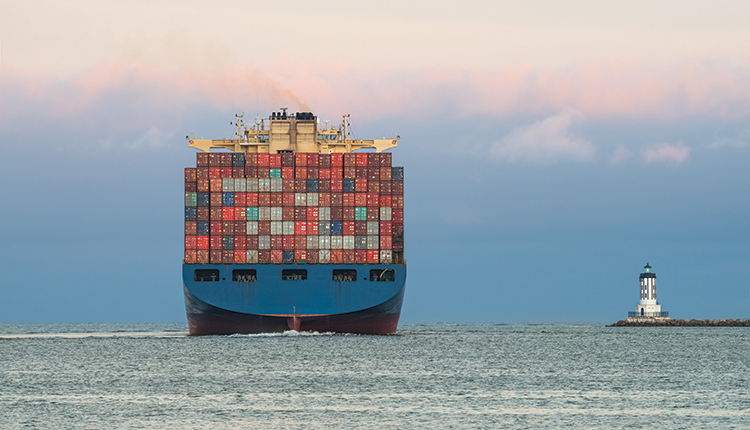2021 retail imports show record growth despite pandemic |
| By Edited by Kristin Ely |
|
|
TEUs show highest growth rate since NRF began tracking, up 18% from 2020. Imports at the nation’s major retail container ports are expected to end 2021 with both the largest volume and fastest growth on record despite supply chain disruptions brought on by the COVID-19 pandemic, according to the monthly Global Port Tracker report released by the National Retail Federation and Hackett Associates. “This has been an unprecedented year,” says Jonathan Gold, NRF vice president for supply chain and customs policy. “We’ve seen more disruption than ever before because of issues along every step of the supply chain and continued strong consumer demand, but we’re also seeing more cargo and faster growth than ever before. There are still ships to be unloaded and containers to be delivered, but everyone in the supply chain has worked overtime this year to try to overcome these challenges. For the most part, they have succeeded, and consumers will be able to find what they need for the holidays.” Imports for 2021 are expected to total 26 million twenty-foot equivalent units, an increase of 18.3 percent over 2020 and the highest number since NRF began tracking imports in 2002. The projected total would top last year’s previous record of 22 million, which was up 1.9 percent despite the pandemic. The growth rate would also be the highest on record, topping 16.7 percent in 2010 as the economy recovered from the Great Recession. A TEU is one 20-foot container or its equivalent. While imports do not correlate directly with sales, the record comes as NRF expects holiday sales during November and December to grow 11.5 percent over last year. Despite the double-digit import growth for the year, monthly totals have settled to single-digit year-over-year growth, a pattern expected to continue at least through the first quarter of 2022. “After nearly a year of what seemed like runaway growth once the economy reopened from the worst days of the pandemic and unleashed pent-up consumer demand, port data now shows imports settling down,” says Ben Hackett, founder of international trading consulting firm Hackett Associates. “As economic activity slows after the holidays, we do not expect to see a resurgence of year-over-year double-digit import growth. Instead, it will be more like ‘steady as she goes.’” U.S. ports covered by Global Port Tracker handled 2.21 million TEU in October, the latest month for which final numbers are available. That was up 3.5 percent from September but down 0.2 percent from October 2020, marking the first year-over-year decline since July 2020. The decline ended a 14-month streak of year-over-year growth that began in August 2020 after stores initially closed by the pandemic reopened and retailers worked to meet demand. Even with the decline, October was still among the five busiest months on record. Global Port Tracker projects November at 2.21 million TEU, up 5.1 percent year-over-year. December is forecast at 2.2 million TEU, up 4.6 percent. January 2022 is forecast at 2.24 million TEU, up 9 percent from January 2021; February at 2 million TEU, up 7.3 percent year-over-year; March at 2.19 million, down 3.3 percent, and April at 2.2 million TEU, up 2.2 percent. Global Port Tracker, which is produced for NRF by Hackett Associates, provides historical data and forecasts for the U.S. ports of Los Angeles/Long Beach, Oakland, Seattle and Tacoma on the West Coast; New York/New Jersey, Port of Virginia, Charleston, Savannah, Port Everglades, Miami and Jacksonville on the East Coast, and Houston on the Gulf Coast. |
